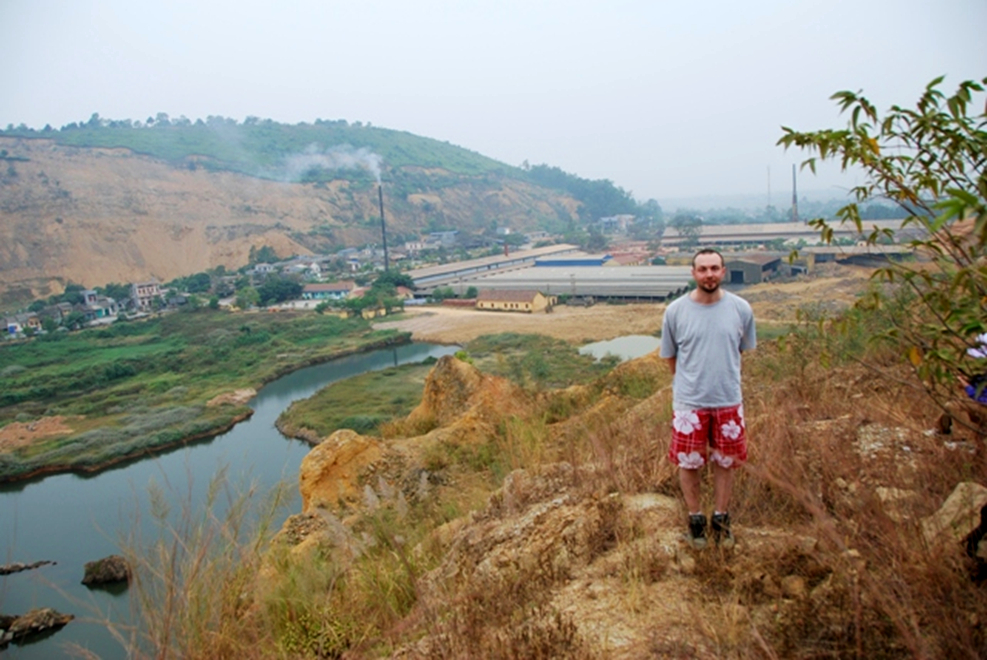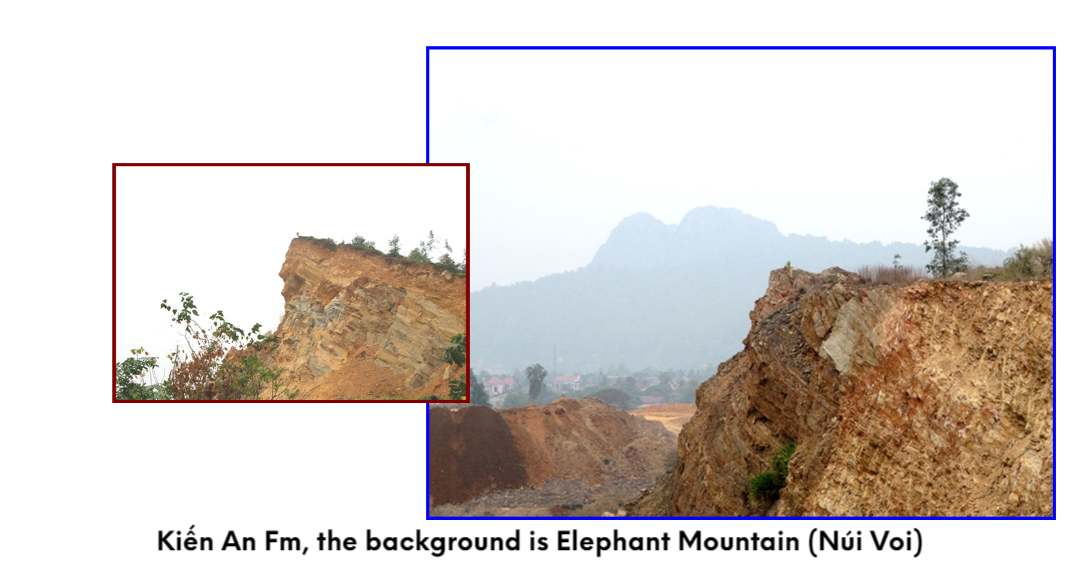Kien An Fm
Type Locality and Naming
Northeast Bac Bo Basin. The section extends through the Phu Lien and Xuan Son Mts, near Kien Ah Town, Hai Phong City (N= 20° 49’; E = 106° 35'). Nguyen Quang Hap (1967) established this formation with the stratotype in the Tien Hoi and Phu Lien IVIts. He described this section with six members, but without data on fossils.
Synonym: Điệp Kiến An: Nguyễn Quang Hạp 1977 (S2); Tống Duy Thanh in Vũ Khúc et al. 2000 - (Hệ tầng)
Frasnien: Patte E. 1927. Hệ Siỉur thống thượng-. Jamoida A.I. (Dovjikov A.E. et al 1965). Điệp Sông Cầu (part): Trần Văn Trị et al. 1975 (D1). Các trầm tích Devon họ: Trần Văn Trị et al. 1977. V Trầm tích Siìur Devon; Nguyễn Đình Hòe, 1977. • Các Trầm lích Silur thượng - Devon hạ: Dương Xuân Hào el al. 1980. 'Hệ tầng Xuân Sơn: Hoàng Ngọc Kỳ, Hồ Trọng Tý 1978 (S2-D1); Đinh Minh Mộng 1979 (S2); Vũ Khúc, Bùi Phú Mỹ et al. 1990 (S2 -D1)
Lithology and Thickness
Sandstone and Limestone: Coarse-grained sandstone, sandstone, quartz-rich sandstone, reef limestone and clayey limestone. Characteristic section in Kien An area is ca. 550 m of: (1). Coarse-grained sandstone, yellowish-grey or reddish-violet, thin-bedded sandstone with widespread cross- bedded structure, 200 m thick; containing brachiopods, such as: Retziella weberi, Howeileiia cf. nucula, Camarotoechia sp., Eospirifer sp., Protathyris sp., and Retzia zinakensis. (2). Reddish-violet silty sandstone interbedded with greenish-grey to black marl and cherty marl, 40-60 m thick; containing badly preserved stromatoporoids, rugose corals, crinoids, trilobites and many brachiopods, such as Retziella weberi, Retzia cf. zinakensis, Camarotoechia sp., Eospirifer tingi, Nikiforovaenaferganensis, E. sp., Howellella aff. bragensis, H. sp. (3). Light colored, medium- to thick-bedded quartz-rich sandstone with some interbeds of yellowish-grey siltstone, 250-300 m thick; containing brachiopods Nikiforovaena ferganensis, Howellella cf. bragensis, Retziella weberi, Eospirifer ferganensis, and Rhynchonella cf. cuneata. (4). Black, thick-bedded reef limestone and clayey limestone, 25-60 m thick; containing tabulates, rugose corals and brachiopods, such as: Mesofavosites sp., Xiphelasma sp., Nipponophyllunt sp., Retziella aff. weberi, Howeilelia aff. latisinuata..
[Figure: Kiến An Fm: Silurian: Kiến An Fm in the brick factory area (images courtesy of Prof. Ta Hoa Phuong, Vietnam Natl. Univ. Hanoi)]
[Figure: Kiến An Fm: Silurian: Kiến An Fm, the background is Elephant Mountain (Núi Voi) (images courtesy of Prof. Ta Hoa Phuong, Vietnam Natl. Univ. Hanoi)]
Relationships and Distribution
Lower contact
The lower boundary of the Kien An Fm has not been observed. Regionally, next older units are either the Phu Ngu Fm (Lang Son Province) or the Tan Mai Fm (Quang Ninh Province).
Upper contact
Transition upward into the Van Canh Fm (in Quang Ninh Province). Next younger unit in Lang Son Province is the Si Ka Fm.
Regional extent
Northeast Bac Bo Basin. The Kien An Fm is distributed around Kien An Town, in the Dai Hoang, Phu Niem, Phu Lien, Voi, Tien Hoi and Xuan Son Mts in the Kien An and An Lao District of Hai Phong City.
GeoJSON
Fossils
Abundant characteristic species include Retzielia weberi, Nikiforovaena ferganensis, Howdlella aff. bragensis and H. cf. nucula. Poorly preserved brachiopods include Retziella weberi, Nikiforovaena ferganensis, Eospiriferl sp., Howellella sp., and Camarotoechia sp. (= unidentified rhynchonellid). 2) Intercalation of yellowish sandstone and gray marl with calcareous mudstone having a thickness of about 50 m, with poorly preserved fossils (Retziella weberi, Eospiriferl sp., Howellella sp., and rhynchonellid) have been noted (Vu Khuc & Bui Phu My 1990).
Age
Depositional setting
Additional Information

